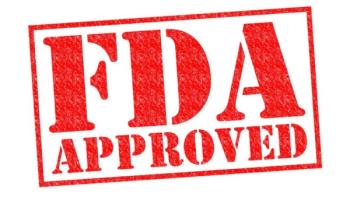
What Does a Stage 2 Prostate Cancer Diagnosis Mean for Me?
Key Takeaways
- Stage 2 prostate adenocarcinoma is localized, with a nearly 100% five-year relative survival rate.
- Diagnosis uses the TNM system, PSA levels, and Gleason score to determine cancer stage and risk.
Choosing treatment for stage 2 prostate cancer? Get the facts on surgery vs radiation and learn to manage possible side effects like erectile dysfunction.
This information is designed to help you, as a newly diagnosed patient with stage 2 prostate adenocarcinoma, understand your diagnosis and initiate an informed discussion with your oncologist. Please use this as a guide to ask questions and work together to choose the best treatment plan for your specific case.
What is Stage 2 Prostate Adenocarcinoma? Diagnosis and Staging Explained
Prostate cancer is typically staged using the American Joint Committee on Cancer's Tumor, Node, Metastasis(TNM) system combined with your prostate-Specific Antigen (PSA) blood test level and your grade group, which is derived from the
Stage 2 prostate cancer is considered localized, meaning the cancer is still confined entirely within the prostate gland and has not spread to nearby lymph nodes (node 0 or N0) or distant parts of the body (metastasis 0 or M0).
- Tumor (T) category: The tumor is large enough to be felt during a
digital rectal exam (DRE) or seen on imaging, and it may involve more than one-half of one side of the prostate or both sides (T2a, T2b, or T2c). - PSA level: Usually remains below 20 nanograms per milliliter (ng/mL).
- Grade group: This is based on the Gleason score from your biopsy and is typically a grade group 2, 3, or 4, which indicates the cancer cells are intermediate to high-grade and have a greater potential to grow and spread compared with stage 1 disease.
The prognosis for localized prostate cancer, including stage 2, is generally excellent, with a five-year relative survival rate of nearly 100 percent.
What Are the Best Treatment Options for Stage 2 Prostate Cancer? Surgery vs Radiation
Your treatment recommendation will be based on your overall health, age, specific tumor characteristics (grade group, PSA), and your personal preferences for managing side effects. The primary options aim to eliminate the cancer include active surveillance or active treatment.
Active Treatments for Stage 2 Prostate Cancer
- Radical prostatectomy: This procedure involves surgically removing the entire prostate gland and, potentially, some nearby lymph nodes. It can be performed through traditional open surgery, laparoscopically, or with robotic assistance.
- External beam radiation therapy (EBRT): High-energy rays are delivered from an external machine to kill cancer cells in the prostate. Treatment is typically given five days a week over several weeks. For higher-risk stage 2 disease, EBRT may be combined with androgen deprivation therapy (ADT), or hormone therapy, to make the radiation more effective.
- Brachytherapy (internal radiation): Tiny radioactive "seeds" are permanently implanted directly into the prostate gland, delivering a high dose of radiation locally over time. This may be used alone or in combination with EBRT for intermediate-risk cancer.
Active Surveillance (Monitoring) for Stage 2 Prostate Cancer
While more common for very low-risk cancer, active surveillance, known as closely monitoring the cancer without immediate curative treatment, may be an option for certain low-risk stage 2 cases, particularly in older patients or those with other significant health issues. It involves regular PSA tests, DREs, and often repeat biopsies and/or imaging to ensure the cancer is not progressing. If the cancer shows signs of growth, active treatment would then be initiated.
Side Effects of Treatment for Stage 2 Prostate Cancer
It's crucial to discuss the potential side effects of each treatment option with your oncologist, as they can significantly affect your quality of life. Many side effects are manageable and often improve over time.
Next Steps in Your Stage 2 Prostate Adenocarcinoma Journey
Stage 2 prostate adenocarcinoma is highly treatable. You have a favorable prognosis, and there is time to make a thoughtful, informed decision.
Your most important next step is to schedule a detailed conversation with your oncologist to:
- Review your specific pathology report (PSA, Gleason/grade group, T-stage) to accurately determine your individual risk level (low, intermediate, or high-risk stage 2).
- Discuss the expected side effects and long-term quality-of-life impact of the different active treatment options (surgery vs. radiation) in the context of your overall health and lifestyle goals.
This guide is designed to be a starting point. Your personal experience will be unique. By using this information as a foundation for your discussions, you can partner with your oncologist to make the best decisions for your health.
Editor's note: This article is for informational purposes only and is not a substitute for professional medical advice. Please contact your healthcare team with any questions or concerns.
For more news on cancer updates, research and education,
References
- "Understanding Gleason Score During a Prostate Cancer Diagnosis," by Dr. Brian Keith McNeil. CURE; Aug. 29, 2025. https://www.curetoday.com/view/understanding-gleason-score-during-a-prostate-cancer-diagnosis
- "Active Surveillance or Treatment? Your Guide to Stage 1 Prostate Cancer Options," by Gina Mauro. CURE; Oct. 3, 2025. https://www.curetoday.com/view/active-surveillance-or-treatment-your-guide-to-stage-1-prostate-cancer-options




